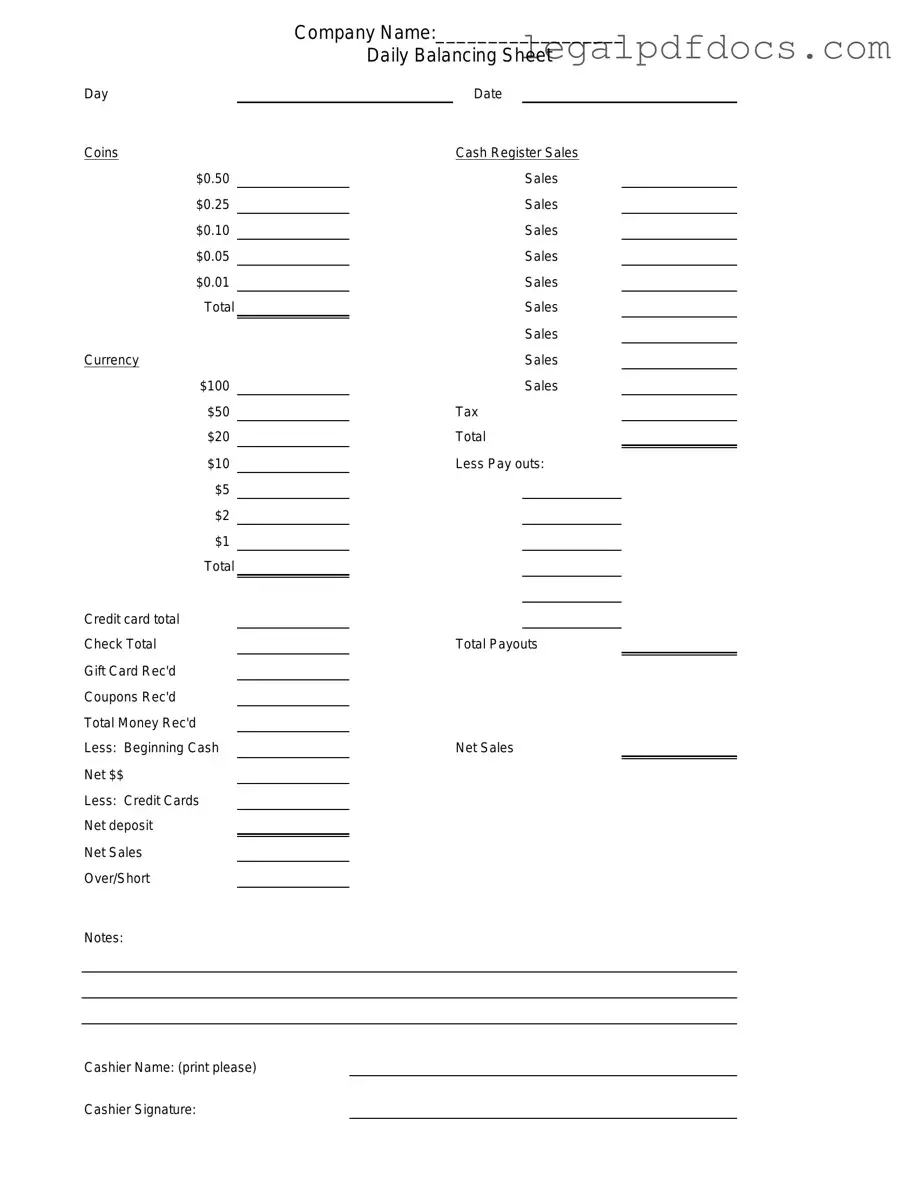Fill Out a Valid Cash Drawer Count Sheet Template
The Cash Drawer Count Sheet is a vital tool used by businesses to accurately track cash transactions and maintain financial accountability. This form provides a structured way to document the amount of cash in a drawer at the end of a shift or day, ensuring that discrepancies can be quickly identified and addressed. To streamline your cash management process, consider filling out the form by clicking the button below.
Open Cash Drawer Count Sheet Editor Here
